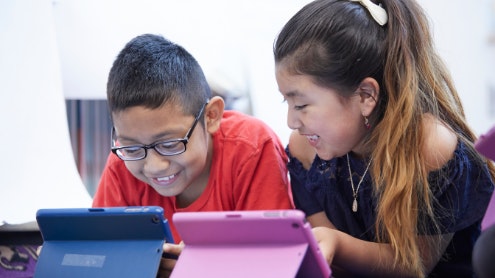Homepage
•
Learning Library
•
Blog
•
What Remote Learning Revealed About the Benefits of 1:1 Devices
Expand breadcrumbs
Expand breadcrumbs
- Learning Library
- Blog
- What Remote Learning Revealed About the Benefits of 1:1 Devices
- Homepage
- •
- Learning Library
- •
- Blog
- •
- What Remote Learning Revealed About the Benefits of 1:1 Devices
What Remote Learning Revealed About the Benefits of 1:1 Devices
By Liz Kolb
August 6, 2021








